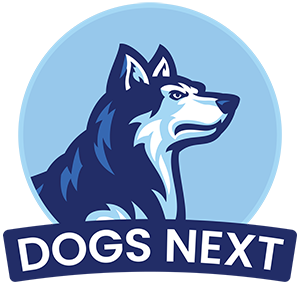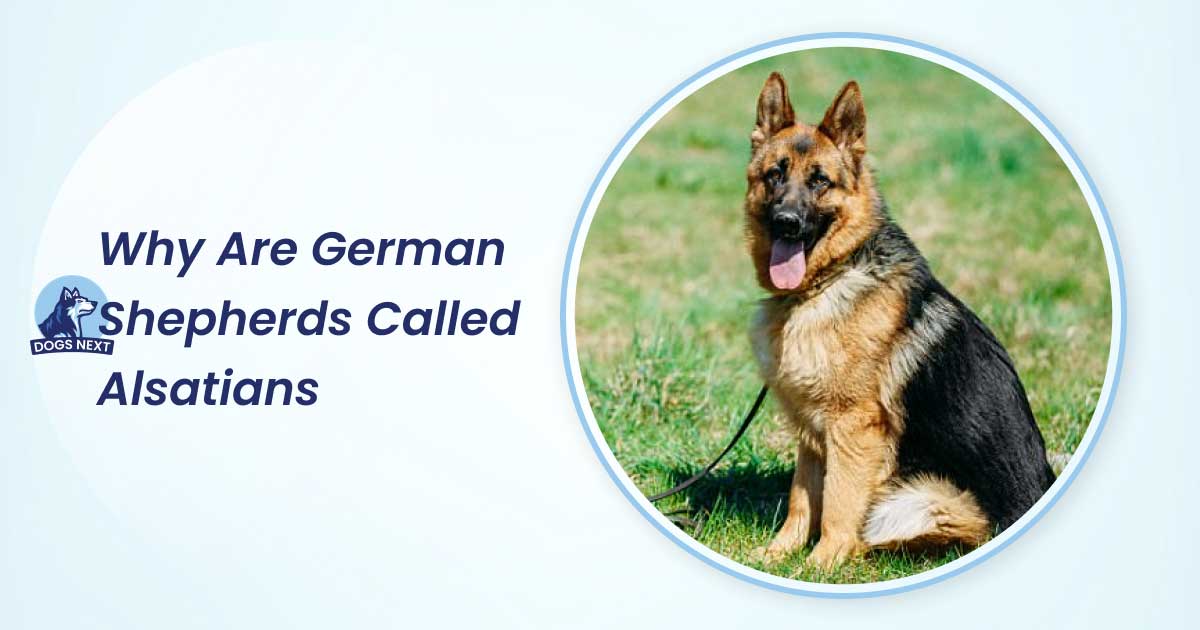German Shepherds are often called Alsatians, especially in Europe. This name change has historical reasons tied to World War I.
During the war, anti-German sentiment was strong. To avoid negative associations, the British renamed the breed after the Alsace region in France. The name Alsatian stuck for many years. Today, both names are used, but German Shepherd is more common.
Understanding this name change helps appreciate the breed’s rich history. It also shows how global events can influence even the names of our beloved pets. Now, let’s dive deeper into why this name change happened and how it affects the breed today.
Historical Context Of The Name Change
German Shepherds are one of the most beloved dog breeds. But you might be surprised to learn that they are also called Alsatians. This name change has a unique historical context. It dates back to the period following World War I. Understanding the reasons behind this change requires a look at the social and political climate of the time.
Post-world War I Anti-german Sentiment In The Uk
After World War I, there was a lot of anti-German sentiment in the UK. People were wary of anything associated with Germany. This included the German Shepherd dog breed.
During the war, Germany was seen as the enemy. British soldiers and civilians had suffered many losses. As a result, the public developed a strong dislike for anything German. This even extended to dog breeds. German Shepherds, known for their intelligence and loyalty, suddenly faced a negative bias.
The British were proud of their wartime efforts. They wanted to distance themselves from anything German. The name “German Shepherd” became problematic. Many people felt uncomfortable using it. This led to a search for an alternative name.
Here’s a table summarizing the reasons for the name change:
| Reason | Details |
| Anti-German sentiment | Post-war distrust and dislike of Germany |
| National pride | Desire to distance from German associations |
| Practicality | Need for a neutral, less controversial name |
“alsatian” Chosen To Avoid Association With Germany
The name “Alsatian” was chosen to avoid association with Germany. The name “Alsatian” comes from the Alsace region. This region is located on the border between France and Germany. By using “Alsatian,” the breed was linked to a more neutral area.
Many believed this new name would help the breed gain acceptance. They hoped it would remove the stigma attached to the German name. The British Kennel Club officially adopted “Alsatian” in 1919. This helped to rebrand the breed in the eyes of the public.
Here are some key points about the origin of the Alsatian name:
- Alsace region: A neutral area between France and Germany
- Rebranding: Aimed to remove negative connotations
- Official adoption: British Kennel Club in 1919
The historical name change was successful. It allowed the breed to maintain its popularity. Over time, the name “Alsatian” became widely accepted. It helped the German Shepherds to continue to be loved and appreciated without the negative associations.
Today, both names are used interchangeably. The breed’s reputation remains strong. The historical context of the name change is a fascinating part of its story.
Association With The Alsace Region
The German Shepherd is a popular dog breed known for its intelligence and loyalty. But many people wonder, why are German Shepherds called Alsatians? The answer lies in the association with the Alsace region in France. This historical connection has influenced the breed’s name, especially in Europe. Understanding this link helps us appreciate the breed’s rich history and cultural significance.
Alsace Region In France As The Source Of The Name
The term “Alsatian” originates from the Alsace region in France. This area has a complex history, often changing hands between Germany and France. During World War I, anti-German sentiment was high in many countries. To avoid any negative associations, the name “German Shepherd” was changed to “Alsatian” in the United Kingdom and other parts of Europe.
Alsace is a region rich in culture and history. Its unique position on the border of France and Germany has led to a blend of influences from both countries. This blend is evident in the name change from German Shepherd to Alsatian. The French connection to Alsatian made it a suitable alternative during a time of political tension.
Key points about the Alsace region and its influence on the breed’s name:
- Alsace is located on the border of France and Germany.
- The region has a mixed cultural heritage from both countries.
- During World War I, the name “German Shepherd” was politically sensitive.
- The name “Alsatian” was adopted to reduce anti-German sentiment.
Table of Historical Events Influencing the Name Change:EventYearImpactWorld War I1914-1918High anti-German sentimentName Change to Alsatian1917Political neutrality
Effort To Make The Breed Name More Politically Neutral
The name change from German Shepherd to Alsatian was part of an effort to make the breed’s name more politically neutral. During wartime, anything associated with Germany faced scrutiny. This included the beloved German Shepherd dog. By adopting the name “Alsatian,” breeders and enthusiasts aimed to protect the breed from negative perceptions.
Reasons for the Name Change:
- Reduce negative associations with Germany during wartime.
- Promote a more neutral and acceptable name.
- Ensure the breed remained popular and respected.
The French influence on the German Shepherd name played a significant role in this change. By linking the breed to the Alsace region, the name “Alsatian” offered a more palatable option for the public. This change helped maintain the breed’s popularity despite the political climate.
Effects of the Name Change:EffectDetailsIncreased AcceptanceThe name “Alsatian” was more widely accepted during wartime.Continued PopularityThe breed remained popular and avoided negative stigma.
Understanding the Alsace name origin and the efforts to make the breed’s name politically neutral gives us a deeper appreciation for the German Shepherd, or Alsatian, and its storied history.
Return To The Original Name
During World War I, the German Shepherd dog breed faced significant stigma due to its association with Germany. To avoid the negative connotations, the breed was renamed “Alsatian” in many countries. Over time, efforts were made to return to the original name, recognizing the breed’s German origins and heritage. This change reflects a growing appreciation for the breed’s history and its intrinsic qualities.
Recent Trends Favoring “german Shepherd” Internationally
The German Shepherd name revival has been gaining momentum in recent years. This shift is due to several factors:
- Historical Accuracy: The breed was originally developed in Germany. Naming it “German Shepherd” honors its origin.
- Globalization: With increased connectivity, people are more aware of the breed’s true history.
- Consistency: Using the original name ensures uniformity in breed recognition worldwide.
In many countries, dog associations and kennel clubs now prefer the term “German Shepherd” over “Alsatian.” This trend is evident in:
| Region | Preferred Name |
| North America | German Shepherd |
| Europe | German Shepherd |
| Asia | German Shepherd |
| United Kingdom | German Shepherd/Alsatian |
In the UK, the term “Alsatian” is still in use, but there is a noticeable return to the German Shepherd name. Pet owners and breeders are embracing this shift. They recognize the importance of historical and cultural accuracy.
The Breed’s Global Recognition By Both Names Today
Despite the modern usage of Alsatian in some regions, the German Shepherd name is widely recognized. This dual recognition ensures that the breed is understood and appreciated globally. The breed’s versatility and intelligence make it popular across many countries.
Both names, German Shepherd and Alsatian, are used interchangeably. This can be seen in:
- Dog Shows: Competitions often list both names to avoid confusion.
- Breeding Programs: Kennels may use either name depending on their location and audience.
- Pet Ownership: Owners may refer to their pets by either name based on personal preference.
This dual recognition benefits the breed in several ways:
- Broader Appeal: More people can identify and relate to the breed.
- Enhanced Adoption Rates: Familiarity with both names can aid in pet adoption efforts.
- Cultural Respect: Acknowledging both names respects the breed’s historical journey.
The Alsatian vs. German Shepherd usage debate may continue. Yet, the breed’s strengths and characteristics remain unchanged. Whether called Alsatian or German Shepherd, this noble breed continues to win hearts worldwide.
Frequently Asked Questions
Why Are German Shepherds Called Alsatians?
German Shepherds were called Alsatians in Britain during World War I. The name change was to avoid anti-German sentiment. The breed originates from Alsace-Lorraine, a region between France and Germany. Thus, “Alsatian” was used to reflect this origin.
Are Alsatians And German Shepherds The Same Breed?
Yes, Alsatians and German Shepherds are the same breed. The name “Alsatian” was used in Britain during World War I. It was meant to avoid anti-German sentiment. Both names refer to the same dog breed.
When Did The Name Alsatian Originate?
The name Alsatian originated during World War I. It was adopted by the British to avoid anti-German sentiment. The breed’s original name, German Shepherd, was temporarily replaced. The term Alsatian refers to the Alsace region.
Is “alsatian” Still Used Today?
Yes, “Alsatian” is still occasionally used today, especially in the UK. However, “German Shepherd” is more widely recognized and used. Both names refer to the same breed of dog.
Conclusion
Understanding the name difference helps appreciate the breed’s rich history. German Shepherds and Alsatians are the same, just different names. The term “Alsatian” came from World War I era sensitivities. Both names reflect the breed’s versatility and loyalty. This insight adds depth to our knowledge of these wonderful dogs.
Whether you call them German Shepherds or Alsatians, their qualities remain unmatched. So next time, remember this unique historical tidbit. Happy bonding with your furry friend!

I’m David, an expert contributor and writer, with two furry friends of my own, I know the challenges of raising and caring for dogs. From training to nutrition and health, my goal is to provide valuable insights and advice to help create strong bonds and happy, healthy lives. Find me in Twitter.




